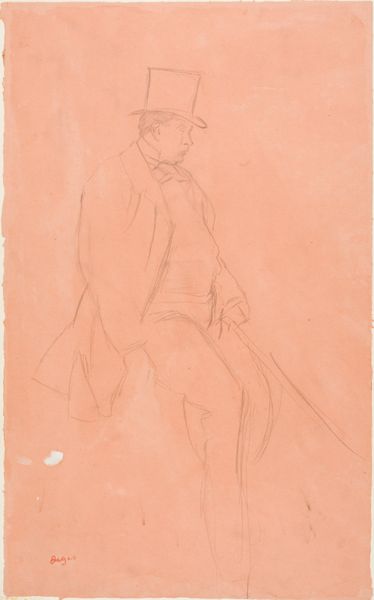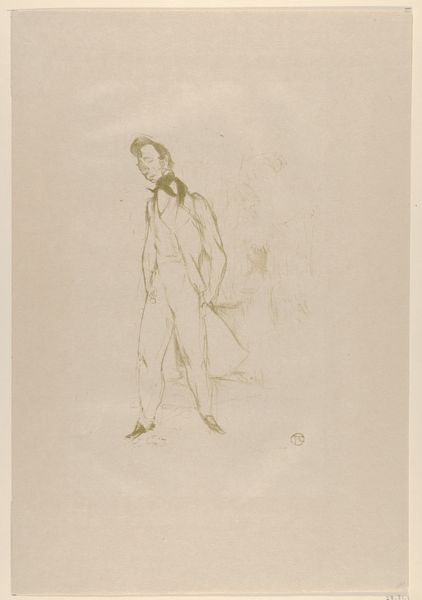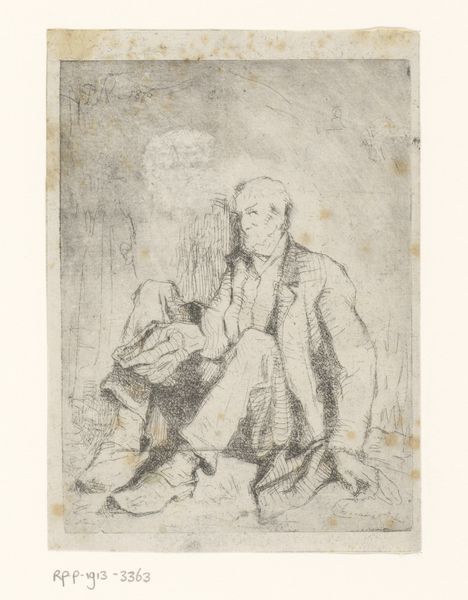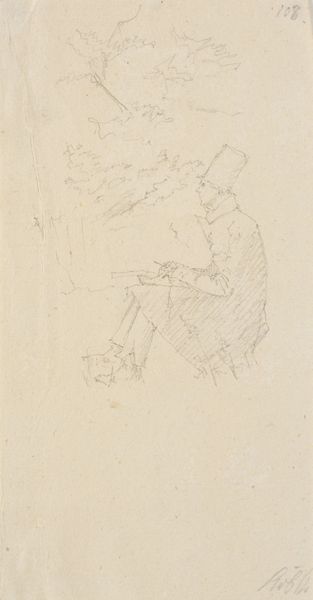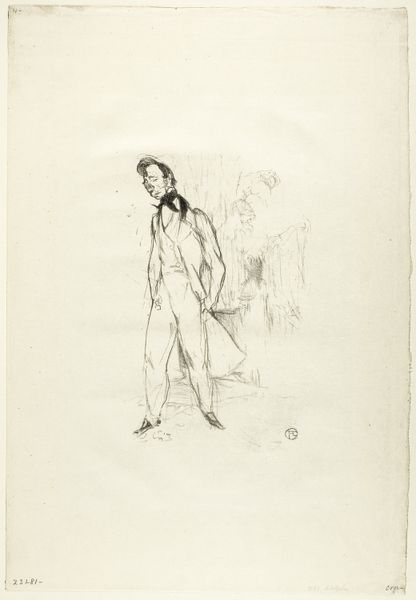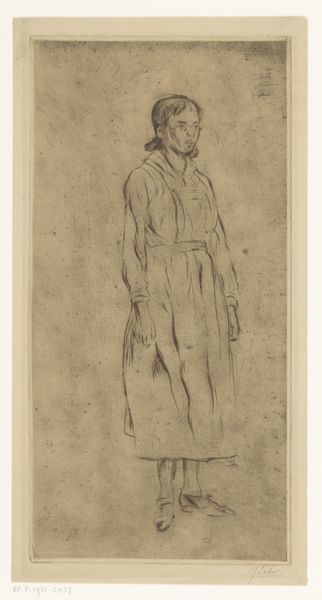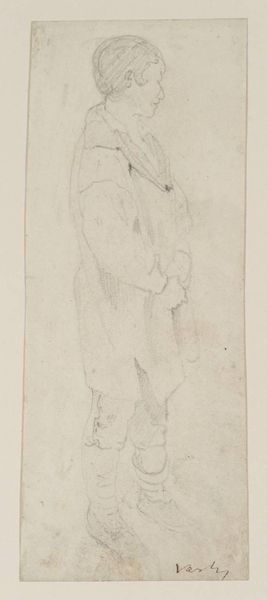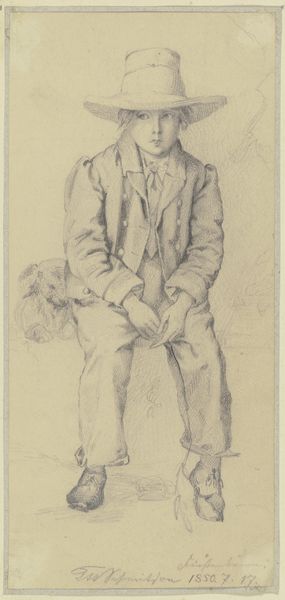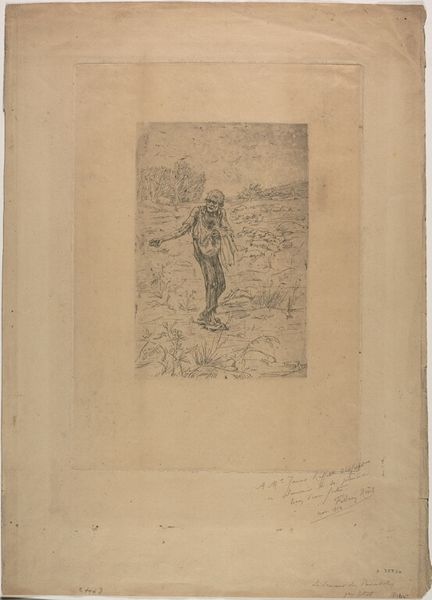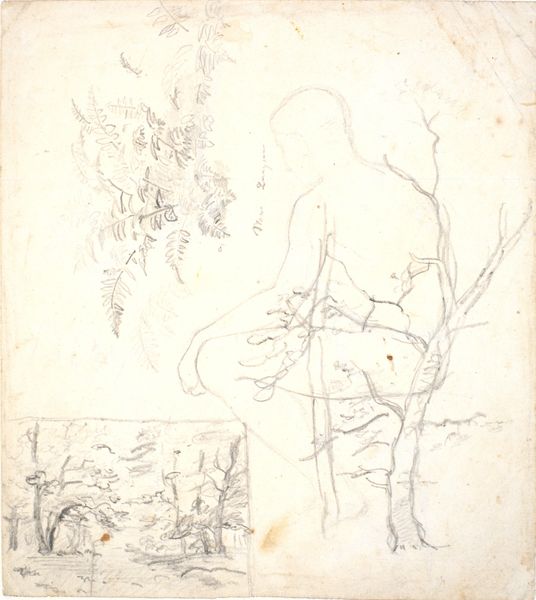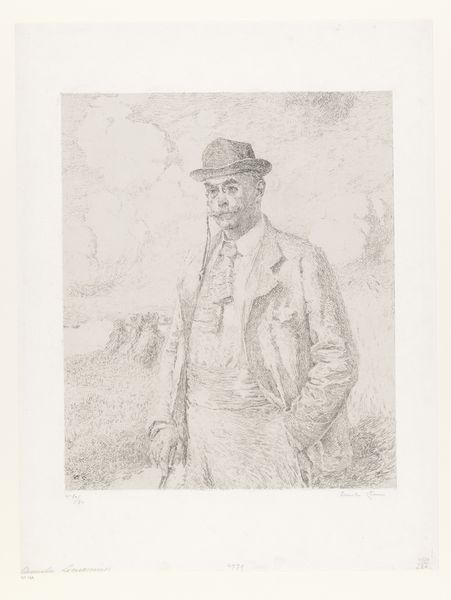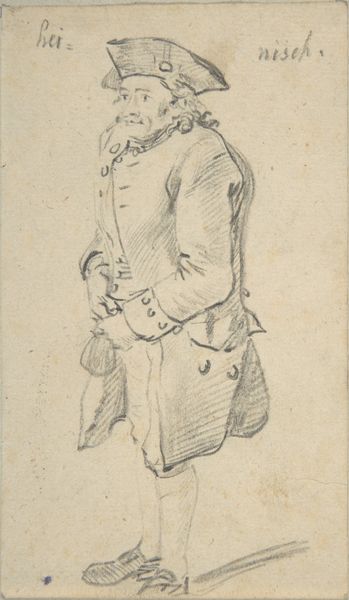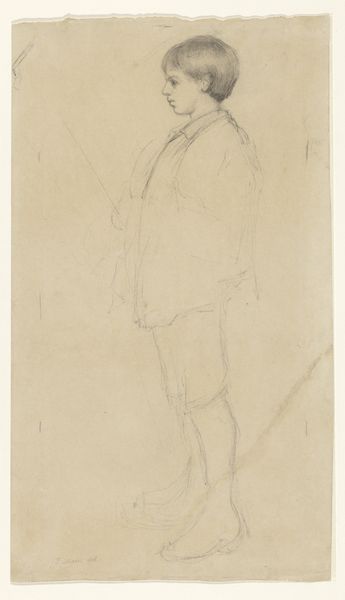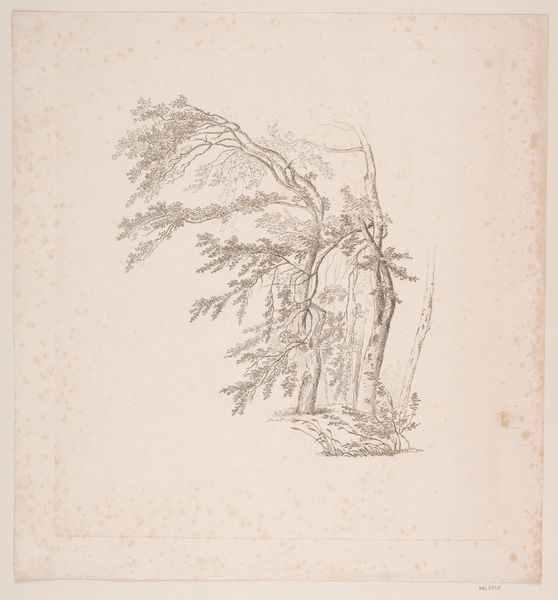
drawing, pencil
#
portrait
#
drawing
#
ink drawing
#
pen sketch
#
landscape
#
figuration
#
personal sketchbook
#
sketchwork
#
ink drawing experimentation
#
romanticism
#
pen-ink sketch
#
pencil
#
sketchbook drawing
#
storyboard and sketchbook work
#
sketchbook art
#
initial sketch
Dimensions: 323 mm (height) x 304 mm (width) (bladmaal)
Editor: So, this is "Standing Young Man and Plant Studies" by Dankvart Dreyer, sketched sometime between 1831 and 1852, using pencil and ink. It's so delicate, almost like a faded memory. I am intrigued by how the figure blends with the plants; how would you interpret that relationship? Curator: The blending you notice speaks volumes. Dreyer, amidst the Romantic era, uses nature not merely as a backdrop, but as an extension of the self. Consider the cultural weight of nature during this period – a source of sublime emotion and spiritual connection. Do you perceive a symbolic mirroring between the young man's stance and the reaching branches? Editor: I think so. He seems to almost be presenting them or mirroring their gesture, or maybe offering them to the viewer? Does the haziness speak to Romanticism, too? Curator: Precisely. The haziness diminishes the clarity of his features as though absorbed by the surrounding environment. Dreyer may be subtly communicating the fragility of human identity, interlinked with, and ultimately surrendered to, the enduring force of nature. How might the "standing young man" archetype complicate this relationship, especially given what young men were expected to represent in Danish society at the time? Editor: That’s a great question – there is tension between strength and yielding. This wasn't just a pretty landscape but a statement about identity and the self. Curator: Exactly, a commentary where personal introspection meets cultural expectations. This symbolic interaction between man and nature encourages us to reflect on humanity's ephemeral place in the grand scheme. Editor: Thank you! I will remember that while thinking about other works. Curator: Likewise, the sketchbook format urges to think on the act of creation and cultural formation as a means of understanding our surrounding landscapes and cultures.
Comments
No comments
Be the first to comment and join the conversation on the ultimate creative platform.
